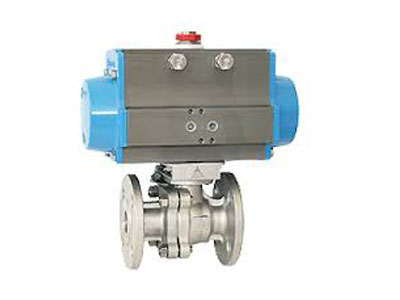What Is A 3-Way Directional Control Valve?
Key Takeaway
A 3-way directional control valve is used to control the direction of fluid flow in hydraulic and pneumatic systems. It features three ports and two flow paths. Typically, these ports include a pressure port (P), an actuator port (A), and a tank port (T). The valve can direct fluid from the pressure port to the actuator or exhaust it to the tank, depending on its position.
This type of valve can be controlled manually or automatically to select between flow paths, allowing for operations such as extending or retracting actuators. It is commonly used in industrial automation to manage fluid movement and control single-acting actuators, making it essential for efficient system operation.
Basic Structure of 3-Way Directional Control Valves
The structure of a 3-way directional control valve consists of:
Three Ports: Typically, one inlet port, one exhaust port, and one outlet port.
Actuating Mechanism: The valve may be manually operated, solenoid-driven, or pneumatically actuated.
Spool or Poppet Mechanism: Inside the valve, a spool or poppet controls the flow by shifting between two positions to open or close specific paths.
This simple design makes 3-way valves versatile and effective in managing basic flow control functions in pneumatic systems.

How 3-Way Valves Work in Pneumatic Systems
In pneumatic systems, the 3-way valve functions by controlling the path of air to actuators such as cylinders. When the valve is actuated, it directs airflow either to the actuator or to an exhaust port to vent the air. Depending on the application, the valve may allow airflow in one direction and block it in another, facilitating the movement of pneumatic cylinders or controlling exhaust in a controlled sequence.
The working mechanism typically involves a shift between two positions—either directing air to the load or exhausting it to release pressure.
Key Applications of 3-Way Directional Control Valves
3-way directional control valves are used in a wide range of applications, including:
Actuator Control: In automation, these valves control the movement of single-acting cylinders by either allowing air in or venting it out.
Simple Flow Control: Common in applications where two positions or flow states are needed, such as in air brakes or automatic doors.
Fluid Diversion: Used to divert fluid in specific systems, such as controlling the airflow in a pneumatic tool or machinery.
These valves are crucial in systems that require basic directional control without the complexity of multi-port valves.
Advantages of Using 3-Way Directional Control Valves
The use of 3-way directional control valves offers several advantages:
Simple Operation: Easy to install and operate, reducing complexity in basic systems.
Cost-Effective: Due to their simplicity, 3-way valves are typically less expensive than more complex valve systems.
Versatility: Suitable for various basic control functions, including controlling cylinders, managing flow, and directing exhaust.
Compact Design: The smaller size makes them ideal for space-constrained environments.
These advantages make 3-way valves an excellent choice for cost-sensitive and straightforward pneumatic applications.
Maintenance and Troubleshooting Tips for 3-Way Valves
To maintain optimal performance of 3-way valves:
Regular Inspection: Check for wear and tear on the valve, especially in high-use applications, to prevent leaks and loss of pressure.
Cleanliness: Ensure the valve and its ports are free of debris, which can impede smooth operation.
Lubrication: Periodically lubricate moving parts like the spool to ensure smooth actuation and prevent jamming.
Leak Detection: Use soap solution or pressure testing to detect leaks at connections, as even minor leaks can lead to inefficiencies.
If the valve fails to operate as expected, it may be due to issues such as contamination, wear, or improper actuation. Identifying the root cause is essential for effective troubleshooting.
Conclusion
3-way directional control valves play a vital role in regulating the flow of air or fluid within pneumatic systems. Their ability to manage basic on/off or flow direction operations makes them indispensable in various applications, from simple actuator control to fluid diversion. Understanding their structure, working principles, and maintenance needs is essential for ensuring optimal performance and extending the life of pneumatic systems.

